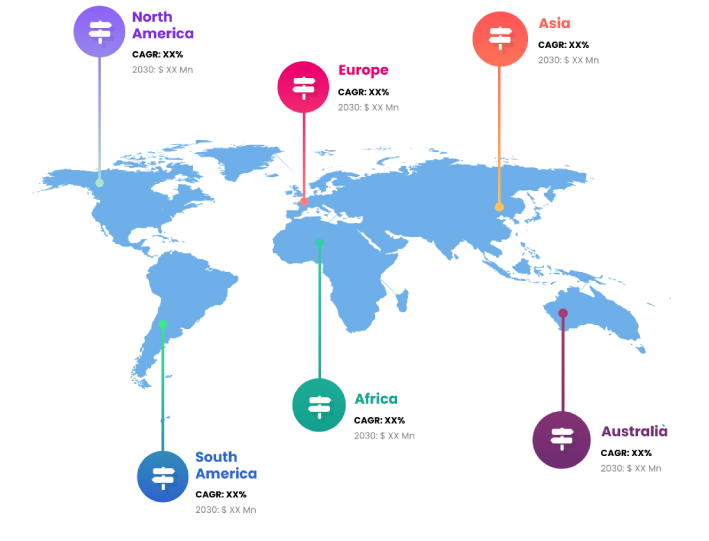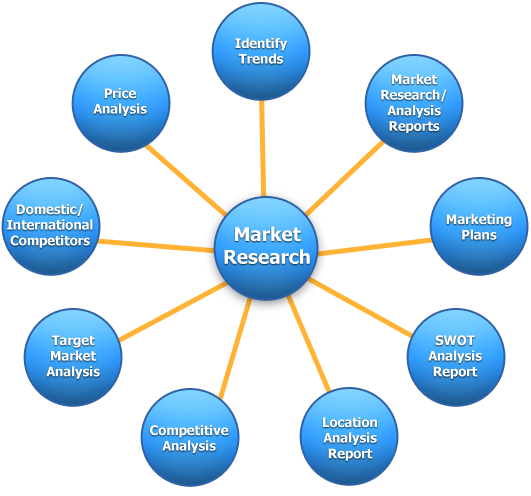
Drivers
Steel is in high demand around the world.
The rising demand for steel around the globe is one factor fueling the global iron ore pellets market. Steel is an indispensable commodity in many fields, including building, transportation, manufacturing, and infrastructure. In emerging economies, especially in Asia and the Pacific, rising urbanisation, population expansion, and industrialization are driving demand for steel, which in turn increases demand for iron ore pellets.
Restraints
Price swings in the iron ore market
The market is hampered by the instability of iron ore prices. Iron ore is a commodity whose price is sensitive to market forces like supply and demand, political upheaval, and economic trends on a global scale. It is difficult for iron ore pellet makers and steel producers to accurately predict and manage costs due to the high degree of volatility in iron ore prices. Iron ore price volatility threatens to derail an otherwise healthy global pellets market.
When it comes to the global steel industry, the iron ore pellets market is a significant and active sector. Small, round balls of iron ore, known as pellets, are a key ingredient in the steelmaking process. The rapid industrialization and urbanisation fueling infrastructure development in emerging nations like China and India is the primary factor propelling the steel market. The market for iron ore pellets is growing as a result of rising demand for steel to construct renewable energy infrastructure like wind turbines and solar panels. The rise of the market is aided greatly by the expanding construction and automotive industries. However, the market is confronted with obstacles such fluctuating iron ore prices, environmental worries about mining, and the growing popularity of electric arc furnace (EAF) steelmaking, which lessens the need for iron ore pellets. However, improvements in pelletizing technology and the use of alternative binders are helping to improve the quality and efficiency of iron ore pellets despite these obstacles. In addition, new opportunities may arise as a result of current R&D initiatives to lessen carbon emissions from the steelmaking process. Demand for steel will always be high, and the steel industry's attempts to become more environmentally friendly and resource-efficient bode well for the global market.
Key Market Developments
Sustainability and environmental responsibility are becoming increasingly important, which is driving a key market trend in the global iron ore pellets market. Carbon emissions are being lowered, energy efficiency is being increased, and the environmental effect of industry operations is being lessened as a result of these changes. Sustainable mining practises, renewable energy research, and investments in other environmentally friendly technology all fall under this category. Increasing environmental worries, regulatory challenges, and consumer and stakeholder demand for environmentally friendly products all play a role in putting sustainability front and centre. This has led to a change in the industry towards iron ore pellet production and steelmaking methods that are less harmful to the environment.
Subtype Analysis
Blast furnace pellets account for the vast majority of the iron ore pellets market worldwide. Iron ore is primarily smelted in blast furnaces to generate pig iron, and blast furnace pellets play a significant role in this process. These pellets have a high strength-to-weight ratio, a consistent size, and can endure the high temperatures and pressures of the blast furnace. Due to their widespread use in large-scale steel manufacturing around the world, blast furnaces have amassed a sizable market share.
Direct Reduced Iron (DRI) pellets, on the other hand, are the most rapidly expanding sector of the market. DRI pellets are optimised for the non-melting reduction of iron ore to metallic iron in direct reduced iron operations. Advantages include enhanced energy efficiency and decreased greenhouse gas emissions as compared to conventional blast furnace techniques. DRI pellets are the fastest-growing subsegment of the global iron ore pellets market due to the increasing importance of environmentally friendly steel production and the widespread use of direct reduction technology.
Methodology of Analysis Via Use
In terms of end use, the steel industry is the largest consumer of iron ore pellets in the world. Iron ore pellets are used extensively in the global steel industry. Pellets made from iron ore are an essential ingredient in both the blast furnace and direct reduction processes used to create steel. Steel production is the leading application segment because of the ever-increasing need for steel caused by urbanisation, infrastructure growth, and the thriving automotive and construction industries.
Iron-based compounds, on the other hand, are the market's quickest-growing subset. Pigments, catalysts, and other specialised chemicals are only some of the iron-based chemical processes that benefit from using iron ore pellets. The pharmaceutical, paint and coating, and water treatment industries' rising demand for iron-based compounds is a major factor in this market's explosive expansion. Market expansion is being driven by factors such as rising R&D spending on iron-based chemical applications and improvements in the grade and purity of iron ore pellets.
Report Coverage
Global Iron Ore Pellets research report categorizes the market for global based on various segments and regions, forecasts revenue growth, and analyzes trends in each submarket. Global Iron Ore Pellets report analyses the key growth drivers, opportunities, and challenges influencing the global market. Recent market developments and Iron Ore Pellets competitive strategies such as expansion, product launch and development, partnership, merger, and acquisition have been included to draw the competitive landscape in the market. The report strategically identifies and profiles the key Iron Ore Pellets market players and analyses their core competencies in each global market sub-segments.
| REPORT ATTRIBUTES | DETAILS |
|---|---|
| Study Period | 2017-2030 |
| Base Year | 2022 |
| Forecast Period | 2022-2030 |
| Historical Period | 2017-2021 |
| Unit | Value (USD Billion) |
| Key Companies Profiled | Vale (Brazil), Rio Tinto (Australia), Cleveland-Cliffs (US), BHP Billiton (UK), US Steel (US), Fortescue Metals (Australia), ArcelorMittal (Luxembourg), Bahrain Steel (Bahrain), LKAB (Sweden), NMDC Limited (India), Anglo American (South Africa), Evraz (Russia), Cliffs Natural Resources (US), Metalloinvest (Russia), Samarco (Brazil), Ferrexpo (Switzerland), POSCO (South Korea), National Iranian Steel Company (Iran), SAIL (India), Kumba Iron Ore (South Africa) |
| Segments Covered | • By Product |
| Customization Scope | Free report customization (equivalent to up to 3 analyst working days) with purchase. Addition or alteration to country, regional & segment scope |
Key Points Covered in the Report
- Market Revenue of Iron Ore Pellets Market from 2021 to 2030.
- Market Forecast for Iron Ore Pellets Market from 2021 to 2030.
- Regional Market Share and Revenue from 2021 to 2030.
- Country Market share within region from 2021 to 2030.
- Key Type and Application Revenue and forecast.
- Company Market Share Analysis, Iron Ore Pellets competitive scenario, ranking, and detailed company
profiles. - Market driver, restraints, and detailed COVID-19 impact on Iron Ore Pellets
Market
Competitive Environment:
The research provides an accurate study of the major organisations and companies operating in the global Iron Ore Pellets market, along with a comparative evaluation based on their product portfolios, corporate summaries, geographic reach, business plans, Iron Ore Pellets market shares in specific segments, and SWOT analyses. A detailed analysis of the firms' recent news and developments, such as product development, inventions, joint ventures, partnerships, mergers and acquisitions, strategic alliances, and other activities, is also included in the study. This makes it possible to assess the level of market competition as a whole.
List of Major Market Participants
Vale (Brazil), Rio Tinto (Australia), Cleveland-Cliffs (US), BHP Billiton (UK), US Steel (US), Fortescue Metals (Australia), ArcelorMittal (Luxembourg), Bahrain Steel (Bahrain), LKAB (Sweden), NMDC Limited (India), Anglo American (South Africa), Evraz (Russia), Cliffs Natural Resources (US), Metalloinvest (Russia), Samarco (Brazil), Ferrexpo (Switzerland), POSCO (South Korea), National Iranian Steel Company (Iran), SAIL (India), Kumba Iron Ore (South Africa)
Primary Target Market
- Market Players of Iron Ore Pellets
- Investors
- End-users
- Government Authorities
- Consulting And Research Firm
- Venture capitalists
- Third-party knowledge providers
- Value-Added Resellers (VARs)
Market Segment:
This study forecasts global, regional, and country revenue from 2019 to 2030. INFINITIVE DATA EXPERT has segmented the global Iron Ore Pellets market based on the below-mentioned segments:
Global Iron Ore Pellets Market, By Type
Blast furnace
direct reduced
Global Iron Ore Pellets market, By Application
Iron-based chemicals
steel production
Global Iron Ore Pellets market, Regional Analysis
- Europe: Germany, Uk, France, Italy, Spain, Russia, Rest of Europe
- The Asia Pacific: China,Japan,India,South Korea,Australia,Rest of Asia Pacific
- South America: Brazil, Argentina, Rest of South America
- Middle East & Africa: UAE, Saudi Arabia, Qatar, South Africa, Rest of Middle East & Africa
You will get in-depth and extensive iron ore pellets market market research and competitor analysis for your business to help you develop more profound insights into the iron ore pellets market Market.
Through INFINITIVE Data Expert is a professional Market Research services, I will identify the iron ore pellets market market size, demand & opportunities, growth rate, and target audience with a comprehensive analysis of your competitors.



